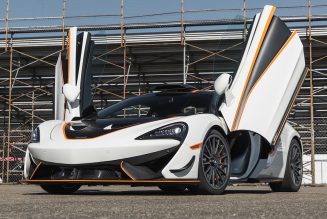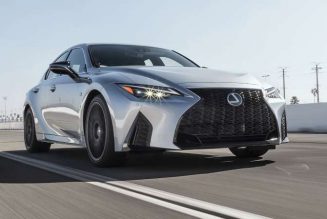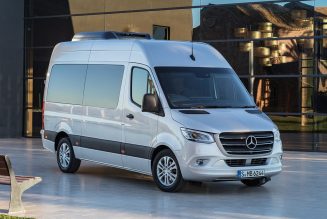“Good luck driving that Jeep Wrangler for 13 hours,” my editor told me in a sarcastic tone. Considering the time I’ve spent behind the wheel of the Wrangler Rubicon and its Gladiator pickup truck sibling, I knew what he was referring to. The loud, bouncy Jeep Wrangler is not the most comfortable SUV—and driving from Moab, Utah, to Los Angeles is something not everyone is up for.
Well, maybe not everyone at MotorTrend. You see, not only do we get to drive all sorts of cars during the year, we also get to choose the vehicles we’d like to take on a road trip. Most of the time, we pick those that are comfortable, ride nice, and are roomy. And while the Wrangler Rubicon doesn’t really fit that criteria, anything that gets me out of the house these days is a good idea—especially when it’s the 470-hp Wrangler 392. Are we spoiled? You betcha!
Like we said in our 2021 Jeep Wrangler Rubicon 392 First Drive story, this Wrangler is a different kind of beast. And we’re not just talking about the 470-hp, 470 lb-ft 6.4-liter Hemi V-8 that launches the 392 from 0-60 mph in 4.2 seconds or completes the quarter mile in less than 13 seconds, per our own instrumented testing. There’s also the glorious sound that this engine makes when you step on the throttle and the Hydro Guide induction system that engineers had to create in order to allow this Wrangler to cross rivers. Moreover, there are the substantial changes that engineers made to the chassis, making the 392 the most capable Wrangler to date.
How lucky was I to drive the 392 back home?
From the Trails to the Backroads in the Wrangler 392
Firing up the 392’s engine at the crack of dawn in the hotel’s parking lot in Moab made me chuckle; the roar at the start and its burbling idle were loud enough to wake up everyone facing the lot. I resisted pressing the Quiet button and instead enjoyed listening to the fantastic sound while I got settled. The thermometer read 28 degrees and the heated seats and heated steering wheel turned on automatically to provide a warm welcome.
The day before, I had covered Moab’s Behind the Rocks trail in a Snazzberry red 392 with a hardtop roof, and its rock-crawling capability and ability to power through sand dunes were impressive. But that cold Wednesday morning I had different plans for my Snazzberry soft-top, as I headed south on Highway 191 leaving behind Moab and the stunning La Sal Mountains.
After stopping for gas and coffee, I headed west on Utah’s State Route 95. The stunning red rock vistas, canyon drops, and twisty turns made the drive anything but boring, and the 392’s ride was settled and refined. Besides lifting the suspension by 1 inch versus other Rubicons, Jeep engineers relocated the rear suspension mounts, stiffened the front springs by 10 percent and softened the rear springs by 20 percent. The Rubicon’s Tenneco monotube shocks were replaced by non-reservoir Fox 2.0 monotube socks. And although the current-gen Wrangler won our hearts during our 2019 SUV of the Year competition, its bouncy ride was something we’ve always noted. The changes to the 392 don’t fix the problem entirely, but the ride is a night-and-day difference—it’s smoother and more refined.
With caffeine kicking in, it was time to get off the pavement. Several trails branch off from Highway 95, but a quick look at Google Maps had me searching for service road 235, which connected with Snow Flats Road. Although service road 235 was quite boring, Snow Flats was scenic and diverse; it wasn’t nearly as challenging as Behind the Rocks, but it had a mix of slick rock and gravel that was captivating. I left the two-speed transfer case in 4Auto and enjoyed the ride. Like all Rubicons, the 392 is equipped with front and rear locking differentials and sway bar disconnect, but I left those untouched. The suspension lift gives the 392 better approach and departure angles (44.5 and 37.5 degrees, respectively), something that we noted in Behind the Rocks, but unnecessary on this milder trail.
By the time I made my second stop for gas in the town of Mexican Hat, Utah, the 392 was averaging about 14 mpg. After driving through Monument Valley and crossing the Arizona border into Kayenta, I headed west on Arizona Highway 98 towards Page for a stop at Horseshoe Bend. The highway stint brought slightly better fuel economy, though always under 17 mpg.
Heading south towards Flagstaff, the 6.4-liter came alive. Not even the 7,000-foot elevation could put a dent in this engine, as it always delivered power without hesitating. The outstanding eight-speed automatic transmission deserves a lot of credit, too, as it stays in the right gear and doesn’t hesitate to downshift. Paddle shifters are standard, but I think I used them once during the entire road trip—you don’t really need them. Press down the accelerator and your back will be pushed hard against the seat while a gratifying sound fills the cabin. Here’s what associate road test editor Erick Ayapana had to say after running our straight-line tests: “My goodness. Unlike any Wrangler I’ve driven. It simply explodes off the line, loud exhaust note, and lots of pull.” The downside? The 33-inch BF Goodrich All-Terrain tires are limited to 100 mph, so the 392 can’t accelerate past that speed.
There are a few other flaws in the 392—Its steering feel is still vague, and its cabin is quite loud. Although its steering isn’t as bad as in the Gladiator’s, it was probably the most irritative foible during my drive back home. And Wranglers are known for loud interiors, even when you opt for the hardtop. But even so, I’d sacrifice some noise insulation for an automatic soft top that opens and closes with the push of a button—like on my 392.
The $75,000 Question
The 6.4-liter engine is available only in the four-door Wrangler Rubicon. Its starting price is $74,995, making the Jeep Wrangler Rubicon 392 the most expensive Wrangler by far. It does come loaded with standard features like the aforementioned heated seats and steering wheel, the 8.4-inch infotainment system with Apple CarPlay and Android Auto and navigation, as well as other packages that are optional in other Wranglers.
But when you factor in everything you’re getting—the most capable Wrangler, a V-8 engine, and a more compliant suspension, the $75K suddenly seems like a bargain. Even without the 6.4-liter, Wrangler Rubicons can easily reach $60,000, and the 392 is simply the best Wrangler there is today.
When I asked Jeep engineers why not put the 700-hp Hellcat engine in the Wrangler, their reply was “because we don’t need it.” They felt that 4.2 seconds to 60 mph and a sub-13-second quarter-mile is good enough. And after 18 hours and over 930 miles behind the wheel of the 392, I couldn’t agree more.
Jeep Wrangler Rubicon 392
Pros:
- Amazing, powerful engine
- Soft suspension
- Comes fully equipped
Cons:
- Loud cabin
- Vague steering
- Awful fuel economy
| SPECIFICATIONS | 2021 Jeep Wrangler Unlimited Rubicon 392 |
| BASE PRICE | $74,995 |
| PRICE AS TESTED | $78,545 |
| VEHICLE LAYOUT | Front-engine, 4WD, 5-pass, 4-door SUV |
| ENGINE | 6.4L/470-hp/470-lb-ft OHV 16-valve V-8 |
| TRANSMISSION | 8-speed automatic |
| CURB WEIGHT (F/R DIST) | 5,122 lb (54/46%) |
| WHEELBASE | 118.4 in |
| LENGTH x WIDTH x HEIGHT | 188.4 x 73.8 x 74.5 in |
| 0-60 MPH | 4.2 sec |
| QUARTER MILE | 12.9 sec @ 100.4 mph |
| BRAKING, 60-0 MPH | 133 ft |
| LATERAL ACCELERATION | 0.67 g (avg) |
| MT FIGURE EIGHT | 29.3 sec @ 0.56 g (avg) |
| EPA CITY/HWY/COMB FUEL ECON | 13/17/14 mpg |
| ENERGY CONS, CITY/HWY | 259/198 kWh/100 miles |
| CO2 EMISSIONS, COMB | 1.33 lb/mile |









